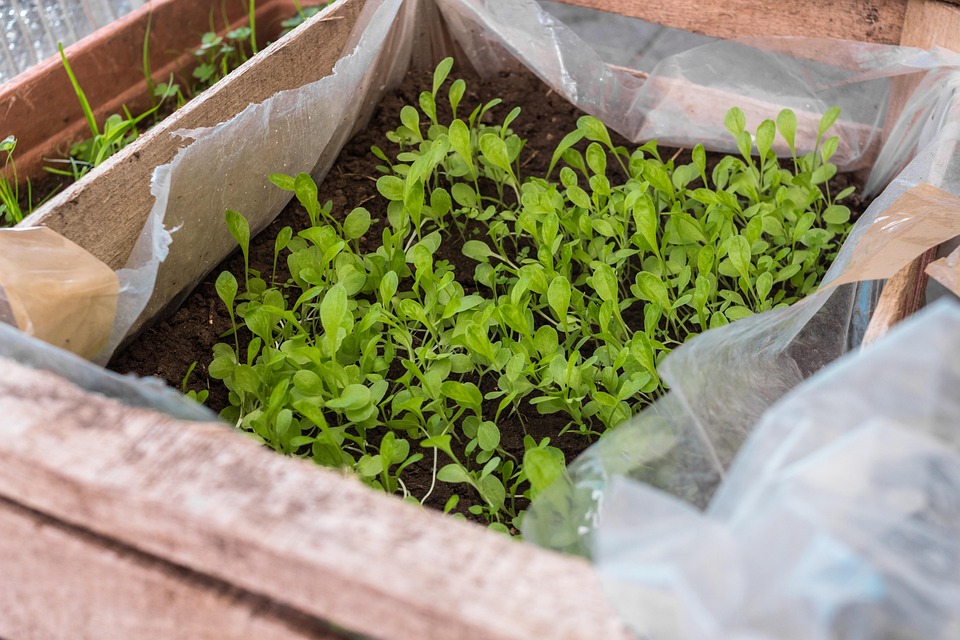# The Future of Agriculture: Embracing Sustainable Farming Methods
The sun peeked over the horizon, bathing the dew-kissed fields in a warm golden glow. I took a deep breath of the crisp morning air, infused with the earthy scent of freshly turned soil and blooming flowers. There’s something magical about dawn on a farm. Each day presents a new canvas to paint with the vibrant colors of life—life that thrives in balance with nature, nourished by sustainable practices that prioritize harmony over hustle. As I gathered my tools and prepared for a day of planting, I couldn’t help but marvel at the blossoming future of agriculture, where innovative, eco-friendly methods are stepping into the spotlight.
Sustainable farming isn’t just a trend; it’s a revolution. With the world facing unprecedented challenges like climate change, soil degradation, and food insecurity, agriculture is evolving to meet the demands of a more conscious society. So, what does the future of agriculture look like? Let’s dive into the exciting potential of sustainable farming methods that are transforming the way we cultivate our food.
## The Essence of Sustainable Farming
At its core, sustainable farming focuses on meeting current agricultural needs without compromising the ability of future generations to meet theirs. This principle encompasses a range of practices that promote biodiversity, ecological health, and economic viability while reducing the adverse environmental impact typically associated with traditional farming.
### Key Components of Sustainable Farming
1. **Crop Rotation**: This technique involves alternating the types of crops grown in a particular area. By rotating crops, farmers naturally replenish nutrients in the soil, disrupt pest cycles, and reduce the reliance on chemical fertilizers.
2. **Permaculture**: A design philosophy that mimics natural ecosystems is the foundation of permaculture. It promotes techniques such as companion planting, guilds, and forest gardening, allowing for a diverse and resilient food system.
3. **Organic Farming**: By abstaining from synthetic fertilizers and pesticides, organic farming nurtures the soil and supports biodiversity. It encourages practices like composting, mulching, and natural pest control.
4. **Agroforestry**: Integrating trees and shrubs into farming systems enhances biodiversity, improves soil quality, and provides additional income sources, such as fruit or timber.
5. **Regenerative Agriculture**: This method goes beyond sustainability by actively improving the health of soil, ecosystems, and communities through practices such as cover cropping and holistic grazing.
## Technological Innovations Revolutionizing Farming
Sustainable agriculture is not just about age-old practices; it also embraces cutting-edge technologies that help farmers work smarter. Drones, sensors, and AI are reshaping the landscape of agriculture, providing tools that enhance efficiency and minimize waste.
### Drones and Precision Agriculture
Drones are game-changers, allowing farmers to monitor crop health, assess irrigation needs, and even distribute fertilizers and pesticides with precision. They can identify nutrient deficiencies and pest infestations early, enabling targeted interventions that minimize input usage and environmental impact.
### Smart Irrigation Systems
Water conservation is crucial, especially in regions facing drought. Smart irrigation systems utilize weather data and soil moisture sensors to optimize watering schedules, ensuring that crops receive just the right amount of water at the right time. This not only conserves water but also encourages deep root growth, resulting in healthier plants.
### Vertical Farming
In urban areas, where space is at a premium, vertical farming is gaining traction. This innovative approach involves growing crops in stacked layers, often in controlled environments. Utilizing hydroponics or aeroponics, these farms drastically reduce land use and can produce food year-round, minimizing transportation costs and emissions.
## Community and Cooperative Farming
One significant aspect of sustainable agriculture is its ability to foster community. Cooperative farming, in which farmers pool resources and share knowledge, is gaining momentum. This approach not only strengthens local economies but also promotes social equity and resilience.
### Community Supported Agriculture (CSA)
CSAs are partnerships between farmers and consumers, where members pay upfront for a share of the harvest. This model directly connects people to their food sources and promotes seasonal eating. Users become invested in the farm’s success, creating a sense of community and shared responsibility.
### Educational Initiatives
Many sustainable farms prioritize education, offering workshops and training sessions on organic practices, permaculture, and soil health. By sharing knowledge and resources, farmers empower others to embrace sustainable methods, creating a ripple effect that can lead to greater environmental and social change.
## Pro Tips for Embracing Sustainable Agriculture
1. **Start Small**: If you’re new to sustainable agriculture, begin with a small garden. Experiment with organic horticulture or container gardening to understand the principles before scaling up.
2. **Embrace Diversity**: Cultivate a variety of plants to attract beneficial insects and promote healthy soil. Companion planting can improve yields and reduce pest problems.
3. **Create a Compost System**: Composting reduces waste and enriches your soil with essential nutrients. Get creative—use kitchen scraps, yard waste, and even coffee grounds!
4. **Educate Yourself and Others**: Stay informed about sustainable practices by attending workshops and reading literature. Share your knowledge with friends and family to encourage a collective movement toward sustainability.
5. **Connect with Local Farmers**: Establish relationships with local farmers to exchange ideas and resources. This will help build a supportive community focused on sustainable practices.
6. **Experiment with Technology**: Utilize apps and online resources to help manage your garden or farm. From tracking plant growth to analyzing soil health, technology can enhance your sustainable practices.
## The Role of Legislation and Policy
As we envision the future of agriculture, it’s essential to consider the role of legislation and policy. Governments worldwide are beginning to recognize the importance of sustainable practices and are introducing incentives, grants, and programs to support farmers in transitioning to eco-friendly methods.
Advocating for policies that promote sustainable agriculture is vital. Engaging with local representatives and participating in community forums can help ensure that agricultural policies align with the needs of farmers and the environment.
## Conclusion: Cultivating a Brighter Future
The future of agriculture is vibrant and full of promise. By embracing sustainable farming methods and fostering community connections, we can cultivate not only our soil but also a future where harmony with nature is at the forefront of farming practices. The journey toward sustainability is an exciting adventure, filled with opportunities for innovation, learning, and growth.
So, grab your planting tools, get your hands dirty, and join the movement towards a sustainable agricultural future. Let’s nurture our planet while reaping the bountiful benefits of sustainable farming—because when we care for the earth, the earth cares for us in return.



